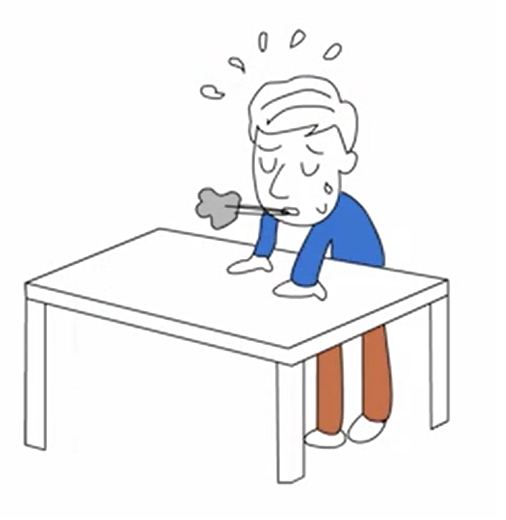news
PrimaryBreathe research to help people suffering with chronic breathlessness across the UK

A new research programme called PrimaryBreathe will launch this September, with a mission to develop and evaluate breathlessness support that could be made available to everyone who needs it across the UK.
Over the next five years, the research team will develop and test an intervention to help people suffering from chronic breathlessness. The new intervention will be developed with patients and primary care staff specifically for use in primary care. It will be underpinned by the educational tool developed by the Cambridge Breathlessness Intervention Service, called the Breathing Thinking Functioning model.
The ultimate aim is that if the new intervention is found to be effective, that it will become available to anyone in the UK who has chronic breathlessness, whatever their underlying condition or disease stage, and wherever they live.
The research will be funded by the National Institute for Health and Care Research (NIHR) and jointly led by Dr Anna Spathis, Assistant Professor and Honorary Consultant in Palliative Medicine, and Jonathan Mant, Professor of Primary Care Research, both at the University of Cambridge’s Primary Care Unit.
The five-year research programme aims to give general practice staff the skills to help their breathless patients feel better, in control and out of hospital. Patients and staff are enthusiastic about this work and have already been giving us advice. For example, they want treatment to be available by telephone or video, so people do not have to leave their homes.”
– Dr Anna Spathis, joint chief investigator
Find out more
You can see the full announcement about PrimaryBreathe on the Primary Care Unit website
Educational tool can break the vicious cycle of chronic breathlessness, report health professionals
Health professionals report that the Breathing, Thinking, Functioning (BTF) clinical model increases clinician and patient understanding of chronic breathlessness and provides a simple and structured approach to personalised self-management.
Chronic breathlessness is a distressing and debilitating symptom that is becoming widespread as people live longer, often with multiple chronic conditions for long periods of time. Already, over a quarter of older people (not including those in hospital) are living with breathlessness caused by conditions such as chronic obstructive pulmonary disease and heart failure. COVID-19 is further exacerbating the problem, with evidence that a significant minority experience persistent breathlessness long after acute infection has resolved.
But breathlessness is challenging to manage, partly because its severity bears little relationship to that of the underlying condition, with more than 40% of patients with mild COPD, for example, experiencing moderate to severe breathlessness. Primary care is recognised to hold much of the burden of supporting people with long-term conditions, including breathlessness, but health professionals in both primary care and respiratory medicine describe feeling ‘out of their depth’ and ‘overwhelmed’, when attempting to control the symptom. Drug treatments tend not to help and while non-drug measures are promising, they remain sporadic and under-used.
The Breathing, Thinking, Functioning (BTF) clinical model

The Cambridge Breathlessness Intervention Service have developed the only educational tool to support chronic breathlessness management: the Breathing, Thinking, Functioning (BTF) clinical model.
The model conceptualises emotional and behavioural responses to breathlessness, leading to vicious cycles that inadvertently worsen the symptom or perpetuate it beyond a trigger.
It explains the disassociation between the severity of breathlessness and the underlying condition, and provides a rationale for symptom management: unlike drug treatments, non-drug approaches can break a vicious cycle, turning it into a cycle of health improvement.
Each part of the model is evidence-based; for example, it is well-established that misinterpretations of bodily sensations can lead to a spiral of deteriorating symptoms and panic.
How did health professionals respond to BTF training?
Health professionals who had received training based on the BTF model were asked about the impact of the training, via an online questionnaire sent before the training and then three months afterwards. 109 health professionals provided information, most of whom were allied health professionals and nurses working in respiratory or primary care. Most participants considered the BTF model to be valuable in their clinical practice They reported a substantial increase in confidence managing breathlessness three months after attending the study day compared to before it (73% vs 25% rated confidence as ‘quite a bit’ or ‘very much’).
Participants most valued the role of the model in making sense of the complex symptom of breathlessness. They also felt the model had practical value in structuring and individualising breathlessness management. There was interest in developing an app based on the model.
Most health professionals struggle to manage breathlessness that persists despite best possible treatment of the underlying condition. So, knowing that they find the BTF model helpful is important. Chronic breathlessness is a global phenomenon. Breathlessness management training – combined with digital tools – will not only improve access to symptom control in high income countries, but can also support the type of low-intensity, low-resource interventions urgently needed in less wealthy nations.”
– Dr Anna Spathis, University Lecturer, Primary Care Unit
Read the paper
Spathis, J. Burkin, C. Moffat, R. Tuffnell, S. Barclay, J. Mant, S. Booth. Cutting through complexity: the Breathing, Thinking, Functioning clinical model is an educational tool that facilitates chronic breathlessness management. npj Primary Care Respiratory Medicine. 10 May 2021
Image
To request permission to use the image, please contact us here
